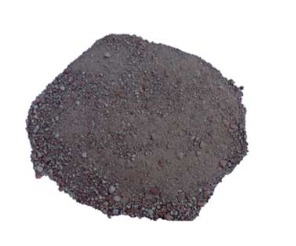Discover all the benefits of Calcined Clay and understand how it can improve your cement production in all aspects!
The production of cement based on the clinker raw material generates a high cost in thermal and electrical consumption for industries, in addition to being one of the biggest responsible for the emission of CO2, one of the main polluting gases in the atmosphere.
However, according to several studies, including from Dynamis, there is a sustainable alternative that will reduce the total costs of cement production. This is the case of Calcined Clays or industrial Pozzolans and in this post we will show you everything you need to know about it to improve and reduce your production costs.
What are calcined clays?

Being of volcanic origin, natural Pozzolana is a rock made up of an almost homogeneous mixture of clay materials, silites and sands. Although they are commonly found in some countries, they can be produced from an industrial process, being known as pozzolonic calcined clays.
The technology developed by Dynamis, the production process for this material undergoes a drying process using our D-FDryer and D-HotGas equipment. Then, in a rotary kiln, calcination is carried out in a controlled atmosphere. For this to happen, we use the D-Gasifier equipment as the main burner of our rotary kiln and the key to the entire innovative production process based on various researches aiming to bring a solution with great benefits for the cement industries in their production activities.
In addition, in our projects with the production of Pozzolana, Dynamis also managed to develop a process of changing color, from red (its natural shade) to gray, so as not to change the color of the cement.
Sustainability benefits of pozzolonic calcined clay.

Cement production is one of the industrial processes that emit the most CO2. According to studies, about 4 billion tons of cement are currently produced, which emit about 1.5 billion carbon dioxide into the atmosphere, making this industry the second largest in emission of polluting gases, behind only agribusiness.
However, according to studies and statistics, about 90% of this emission is related to clinker, which can be replaced in part by Pozzolonic Calcined Clay.
In several countries, both Pozzolanic Calcined Clay and natural Pozzolan can replace clinker in cement production by up to 50%, offering a drastic reduction in CO2 emissions and great advantages in final resistance and corrosion.
Benefits in reducing the cost of cement production with calcined clay.

In addition to having a considerably large CO2 emission, the production of cement based on the clinker raw material also has a high cost for this industrial sector. The cost of fuels and electricity represent the highest costs in this industry.
The replacement of Clinker by Pozzolanic Calcined Clay brings a significant reduction in thermal and electrical costs, with around 25% and 15%, respectively, due to the difference in the cost of producing these materials.
How to find the best solution for your cement industry?
To implement the clinker substitution process for Pozzolanic Calcined Clay and reduce the costs in your cement production, you can hire our solution, which was elaborated through several studies to define the ideal mixture of clay.
You can contact us and know more about our solutions for your industry through our website.
Dynamis team

